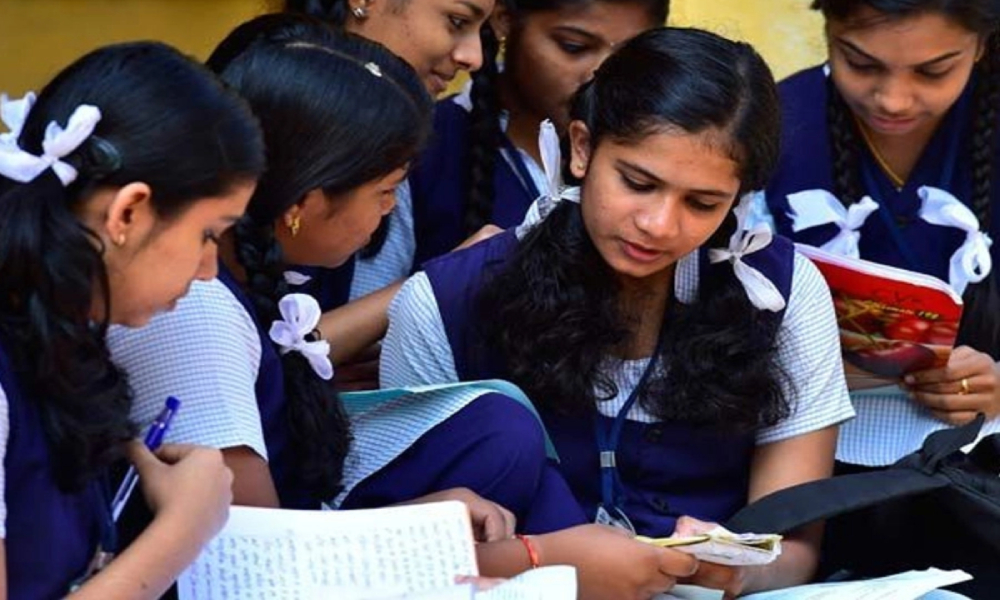
Image Credits: India TV
Digital Divide Pushing Children To Drop-Out Of Schools, Parents Of Several Children Have Been Rendered Jobless
Writer: Anuran Sadhu
A post grad journalism student of SIMC, Pune with a passion for using words to get my message across in the most unique ways possible and curiosity is the force that drives me to learn and experience more every day.
India, 21 Jun 2021 10:50 AM GMT | Updated 22 Jun 2021 11:51 AM GMT
Editor : Ankita Singh |
A literature lover who likes delving deeper into a wide range of societal issues and expresses her opinions about the same. Keeps looking for best-read recommendations while enjoying her coffee and tea.
Creatives : Anuran Sadhu
A post grad journalism student of SIMC, Pune with a passion for using words to get my message across in the most unique ways possible and curiosity is the force that drives me to learn and experience more every day.
While some students have shifted from private schools to government schools, many in rural parts of the country have had to drop out and help their families earn their daily meals.
The suspension of physical classes in all educational institutions has affected students all across the country. Moving into an online mode of education has brought a new set of challenges for the students to deal with.
With the inconsistent supply of electricity, rural-urban disparity and rising unemployment, children all across the country have been adversely affected. The digital divide that exists has made the situation worse as the enrollment ratio has dipped in the last few months.
47% Dip in Private School Enrollment
According to the Haryana education department, 89,138 private school students have moved to government schools during the 2021-22 academic session and last year (2020-21), close to 1.46 lakh students had made the switch. Meanwhile, private schools have reported only 15.78 lakh new admissions this year, compared to 29.83 lakh last year, which accounts for a 47% decrease in enrolments at private schools.
As per a report, parents of several students have rendered jobless and are under extreme financial pressure due to the lockdown in the COVID pandemic. Privates schools have also refused to promote the students to the next standard until their previous year's bills are cleared.
Moreover, in view of the anticipated third wave of coronavirus, parents have enrolled their children in nearby government schools instead of private schools located far away. This cuts the cost as government schools are free and protect the children from travelling when the schools eventually re-open.
Rakesh Kumar, a resident of Charkhi Dadri, who shifted both his daughters to a government school after he lost his job at a private factory in Gurugram, said, "There is uncertainty over the opening of schools and further the private school, where my children were previously enrolled, had refused to reduce the fee even when schools are closed."
Digital Divide in Rural India
While some can still afford to go to government schools and continue their education, many children in rural India have had to drop out and help their parents earn daily meals. According to a recent survey by National Statistics Office (NSO), only 15% of rural households have access to the internet as against 42% of urban households. And, only 10% of students are able to operate computers in rural India.
For example, the residents of Adivasi padas in Malshej, Maharashtra, have lost their livelihoods during the pandemic. The children of the families have been forced to take up odd jobs to help their parents financially. With the closing of all picnic spots in the area, families who earned their daily wages selling vegetables and food items to the travellers have no source of income now. On top of that, these areas have poor access to electricity which has pushed digital education out of the picture.
Jayesh Pawar, a social worker, said, "Children of Shiravali village (in Malshej) have started fishing or taking up other small work around the area to earn money for daily chores. I came to know about it when I found these children were using mosquito nets to catch fish and earn ₹30 to ₹40 by selling it."
He further said that a few years back, he had convinced the parents to enrol their children on school, but they lost touch with the school because of the pandemic. It would be difficult to make them realize the importance of education again.
Due to financial constraints and almost no access to online education, the children have drifted far away from education.
"I joined the school four years ago but continued only for a year. Now I enjoy fishing, as my school is closed," said Satish Thakare, a 10-year-old from Tokavade village which gives his full time to fishing now. However, he got excited when he saw a lecture on a mobile phone and said he would like to learn that.
While earlier, school teachers and staff and social workers used to visit the Adivasi paras to convince children to go to school, now, due to the Covid-19 staffs are fewer and reaching out to those villages has become difficult, reported Hindustan Times.
Government's efforts
But several government schools in the country have been pushing to promote online education among children in the light of the third wave of coronavirus. For example, in Haryana, government schools have started online classes on Edusat and local cable TV channels free of cost.
They have also decided to provide laptops to students so that they can access online education. While the government continues to encourage students into online education, the scarcity of electricity and loss of livelihood of several parents have kept the children away from schools.
Also Read: Jharkhand: Now, Online Classes At Flexible Hours To Improve Attendance In Govt Schools
 All section
All section














